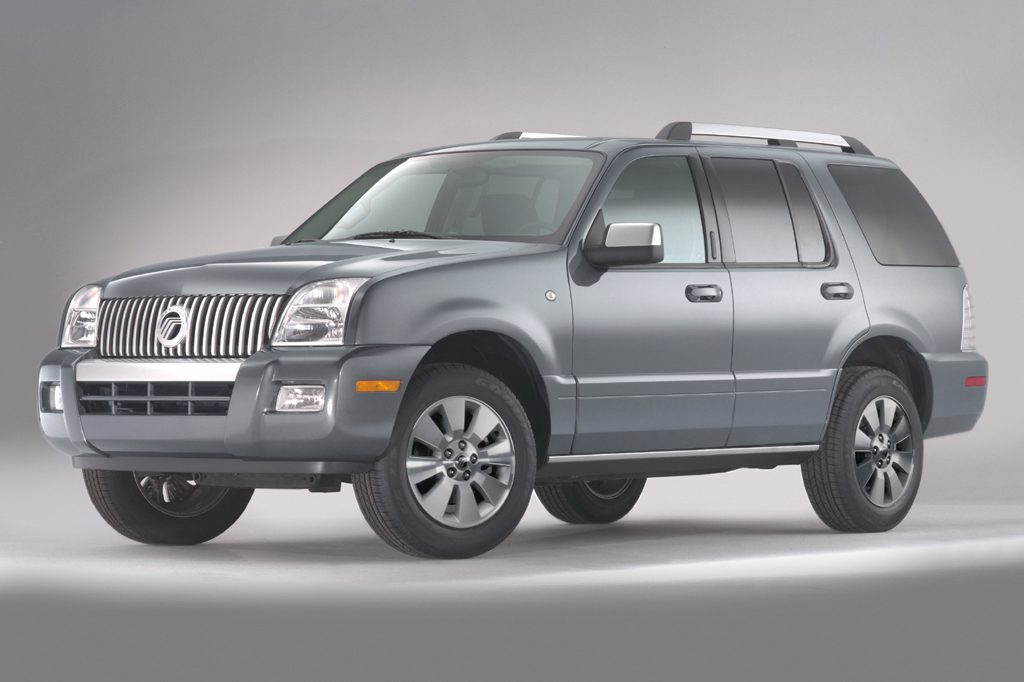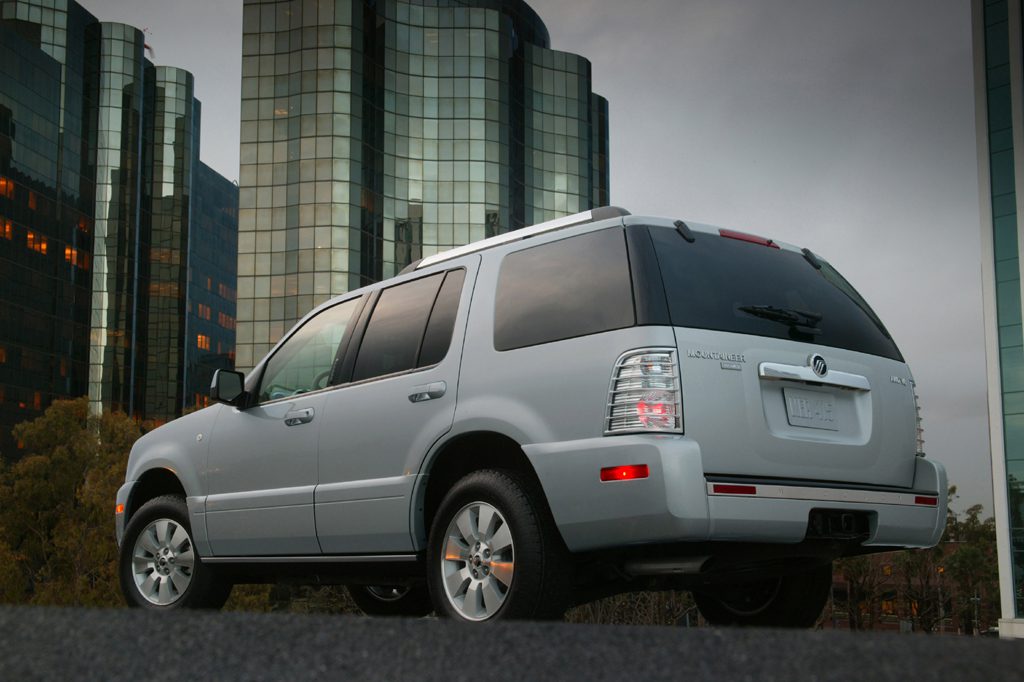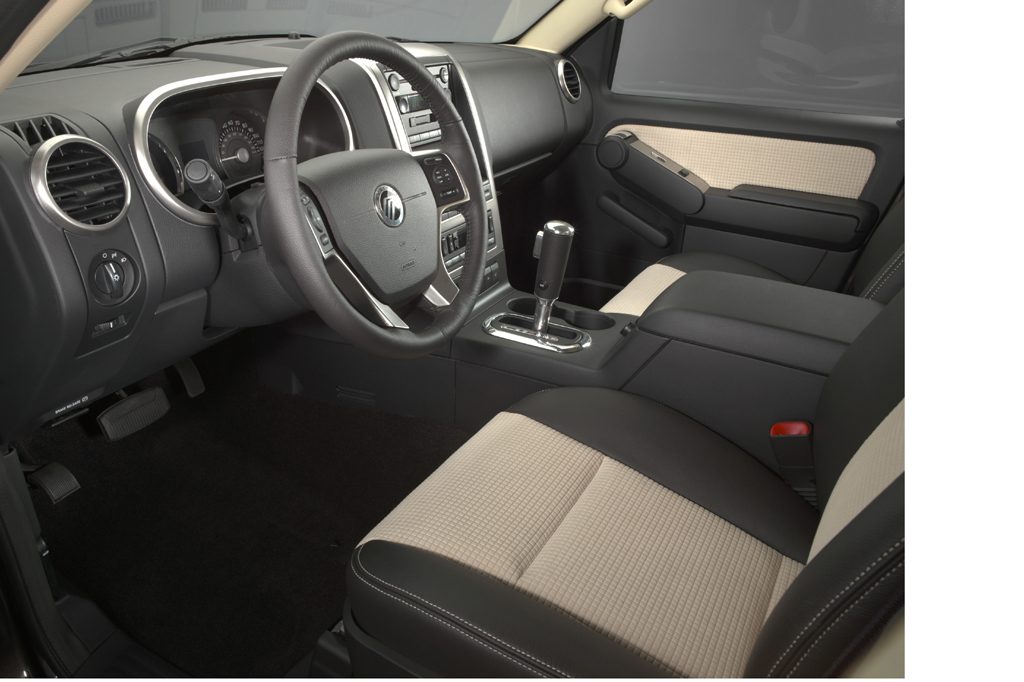| Midsize SUV; Built in USA |
|
|
| Good condition price range: $8,000 – $21,500* |

2006 Mercury Mountaineer

2006 Mercury Mountaineer

2006 Mercury Mountaineer

2006 Mercury Mountaineer
| Pros: |
|
| Cons: |
|
Mountaineer and its Ford Explorer sibling are highly competent overall performers with an outstanding array of available features, including V8 power, seven-passenger seating, and a power-folding third-row seat. Standard and optional safety features also appeal. Their truck-type chassis serves trailering needs without giving up much refinement to lighter-duty midsize SUVs with car-type construction. Mountaineers provide nothing of consequence beyond similarly-equipped Explorers, making the Ford version our Recommended pick for its broader range of model choices. Still, both are solid choices. So-so resale values translate to fairly moderate secondhand prices.
Overview
Mercury’s upscale version of the Ford Explorer got more V8 power, fresh styling, and an available navigation system for 2006. Offered with rear-drive or all-wheel drive, the midsize Mountaineer SUV came in Convenience, Luxury, and Premier trim.
Standard on Luxury and Premier models, and available for the Convenience version, was a split folding third-row seat for seven-passenger capacity, with a power-folding feature newly available. The second row had a 60/40 split bench with available reclining seatbacks.
Two engines were offered: a 210-horsepower V6, and a V8 with 292 horsepower (up 53 over the 2005 model’s V8). The V6 teamed with a five-speed automatic transmission, the V8 with a new six-speed automatic. Both engines worked with rear-wheel drive or four-wheel drive, which was usable on dry pavement and had low-range gearing.
Antilock four-wheel disc brakes were standard. So was Ford’s AdvanceTrac antiskid system, with Roll Stability Control, which was designed to detect an impending tipover and activate the antiskid system to counteract that occurrence. Front side airbags were newly standard for 2006. Optional head-protecting curtain side airbags covered the first and second seat rows, and were designed to deploy in side impacts and rollovers.
All models had 17-inch alloy wheels; 18-inchers were optional. Also available: second-row bucket seats, rear DVD entertainment, power-adjustable pedals, power in/out running boards, rear obstacle detection, and a navigation system. Satellite radio was a dealer-installed option. Mountaineers competed against the Dodge Durango and Toyota Highlander, as well as the closely related Ford Explorer.
Yearly Updates
| 2007 Mountaineer Mercury fielded a slimmed-down model lineup for 2007, dropping the entry-level Convenience model as well as the midrange Luxury edition. Base and Premier models had a standard 210-horsepower V6, but only Premiers could get the 292-horsepower V8 engine. Curtain side airbags with rollover deployment, which protected the first and second rows of seat, were standard on all models. A heated windshield joined the options list. |
| 2008 Mountaineer Newly available on the Mountaineer for 2008 was Ford’s Sync voice-activated control for cell phones and MP3 players. Also new was Ford’s “capless” fuel filling system, which allowed the vehicle to be filled without having to remove a gas cap. |
| 2009 Mountaineer Satellite radio was now standard on Premier models, and traffic information was newly available with the Navigation and Moon and Tune Package. |
| 2010 Mountaineer The 2010 Mercury Mountaineer was largely unchanged for what would be its final model year. |
